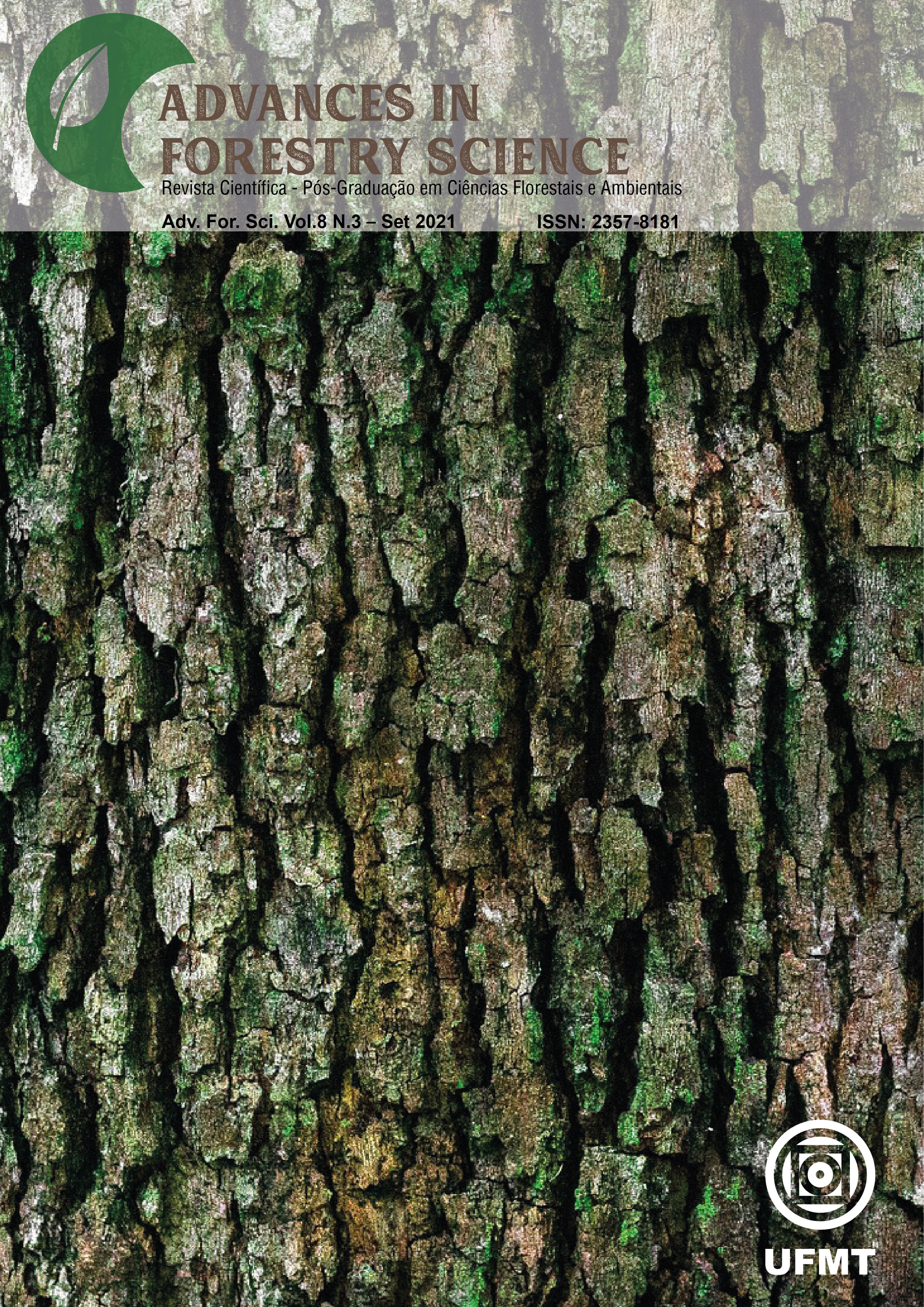Durabilidade natural de cinco espécies madeireiras da Caatinga em ensaio de deterioração em campo aberto e natural
DOI:
10.34062/afs.v8i3.12631Abstract
One way to make viable forest management plans and reduce the Caatinga devastation is the marketing of wood products with higher added values by local rural communities. For that to happen, it is necessary to research and characterize the several native wood species to be able to suggest the best potential options. Therefore, this work aimed to appoint the natural durability of five species native to Caatinga with moderated high to high density. Two rotten fields were implemented: an open, without close vegetation, and a natural, within a Caatinga fragment. Into each field, Angico (Anadenanthera colubrina (Vell) Brenan)), Aroeira (Myracrodruon urundeuva (Allemao)), Jurema Preta (Mimosa tenuiflora (Mart) Benth)), Pau Branco (Auxemma oncocalyx (Allemao) Taub.)) and Pereiro (Aspidosperma pyrifolium Mart) 2x2x30cm stakes, buried to 15cm, were placed. The fields were installed between February and March of 2019 and the stakes had their weigh loss and deterioration index determined after 90, 200 and 270 days. All species showed weight loss under 10% after the total experiment time and were classified as highly resistant. Most of the deterioration happened in the first 90 days, that period matched with the local rain season. Anadenanthera colubrina and Myracrodruon urundeuva species, besides the fungi attack, was also attacked by termites from the Heterotermes genre and by beetles.
Downloads
Published
Issue
Section
License
All copyright must be assigned to the Federal University of Mato Grosso.

